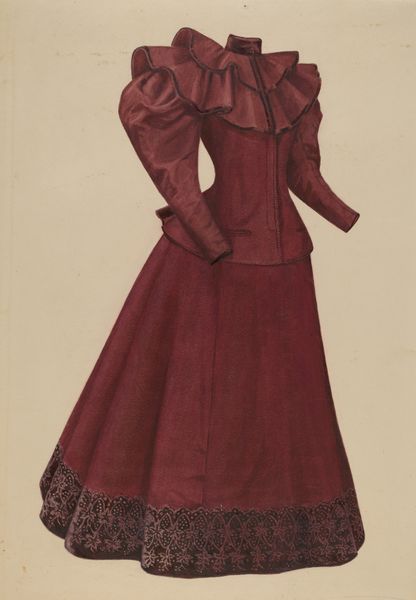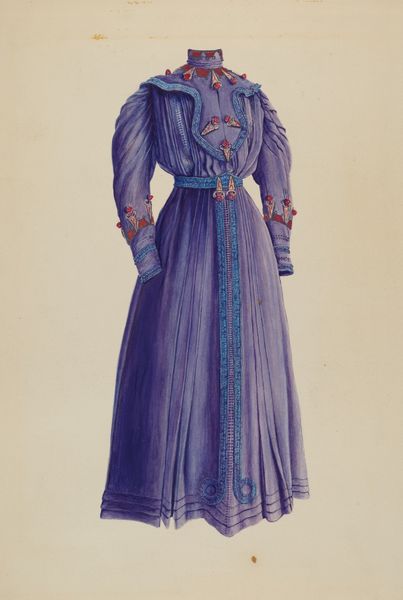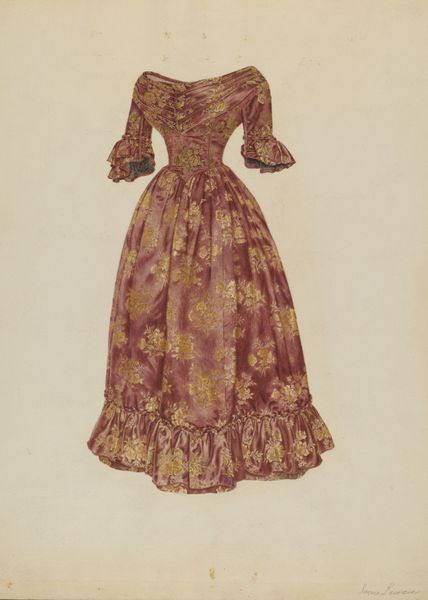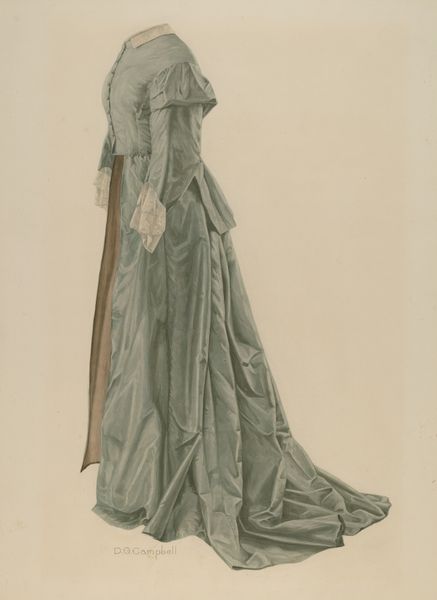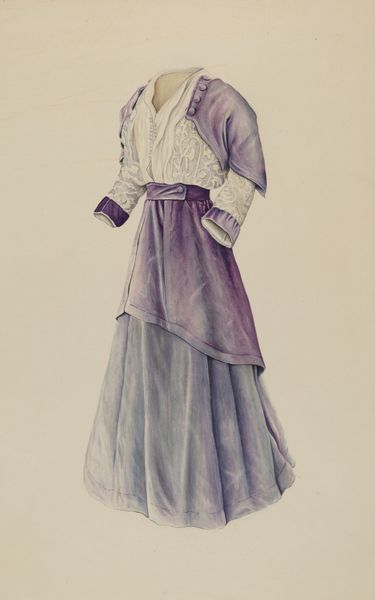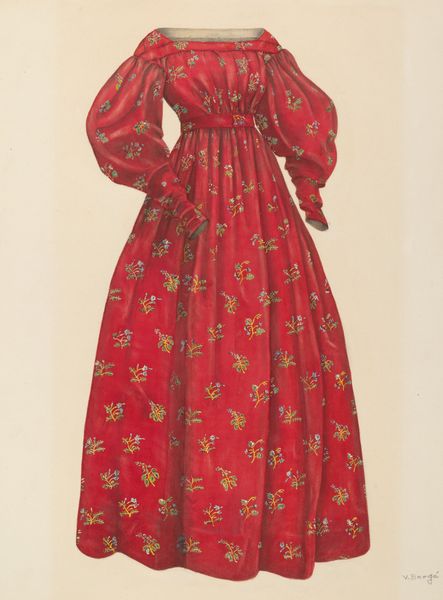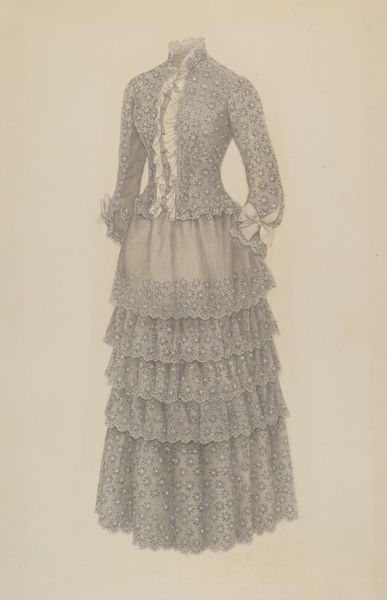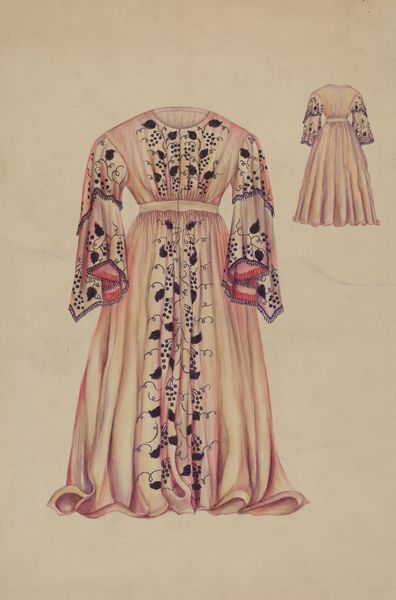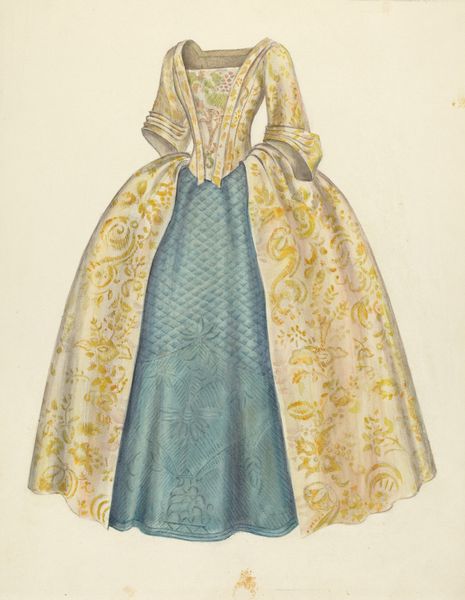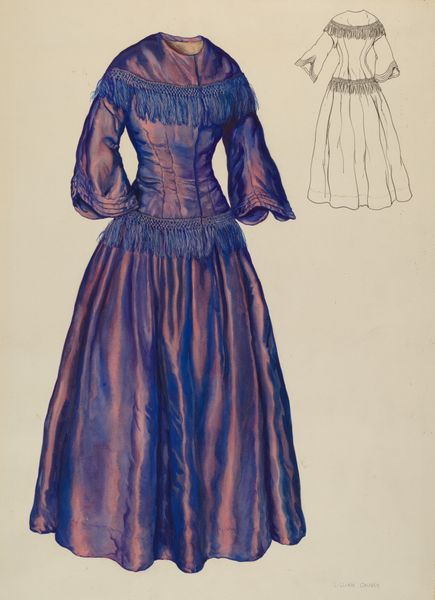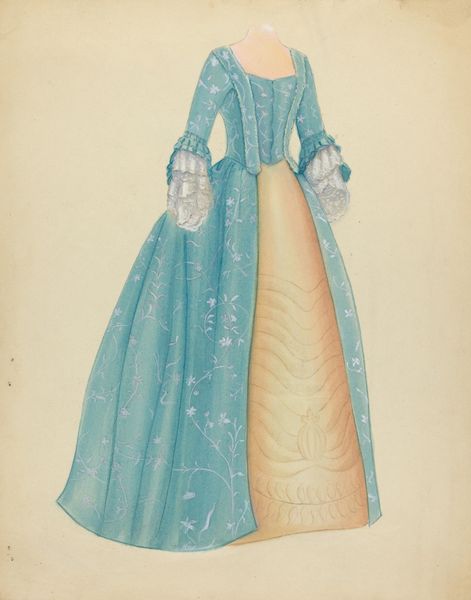
drawing, paper, pencil
#
drawing
#
paper
#
historical fashion
#
pencil
#
history-painting
#
academic-art
Dimensions: overall: 29.1 x 22.5 cm (11 7/16 x 8 7/8 in.)
Copyright: National Gallery of Art: CC0 1.0
Curator: Here we have an intriguing drawing titled "Taffeta Dress," believed to have been created between 1935 and 1942 by an anonymous artist. It's rendered in pencil and drawing on paper. Editor: My initial impression is that this dress feels…restrained, despite the flounce and sweep of it. The colour is surprisingly muted, creating a somewhat melancholic atmosphere. Curator: Indeed. Looking at the artist’s application of line, we see precise and delicate details around the collar, sleeves, and bodice that suggests a sophisticated understanding of form and fabric. Notice how the artist used light and shadow to create the illusion of texture. Editor: Absolutely. It also makes me think about who would have worn this dress, and in what context. The dress suggests formality and social expectations during this time. It hints at certain ideals of femininity and status. What narrative does it embody about women’s roles in that era? Curator: Good question. One might say that the careful pleating and gathered fabric create vertical lines which draw the eye upwards, suggesting perhaps, aspiration, maybe a subtle desire to transcend everyday realities? Editor: I agree to some extent, and I can't help but see that kind of upward movement as restricted within this garment and therefore the person who wears it: those lace trimmings read to me as decorative but ultimately trapping… Curator: A provocative point. I see the lace more as intricate— a mark of craftsmanship which reveals skill in rendering that sort of complex pattern through its form. The cascading layers, even in this limited tonal range, possess a depth that alludes to the wearer’s status within their respective social spheres. Editor: Perhaps, but to what end? Looking closer, it reminds me that during that period women had to perform very precisely the conventions of elegance. They were like mannequins…almost like this rendering. Curator: Well, perhaps this drawing stands alone and apart as an evocative material example of dressmaking as art. Thank you. Editor: Agreed, on some points at least, and thank you as well.
Comments
No comments
Be the first to comment and join the conversation on the ultimate creative platform.

